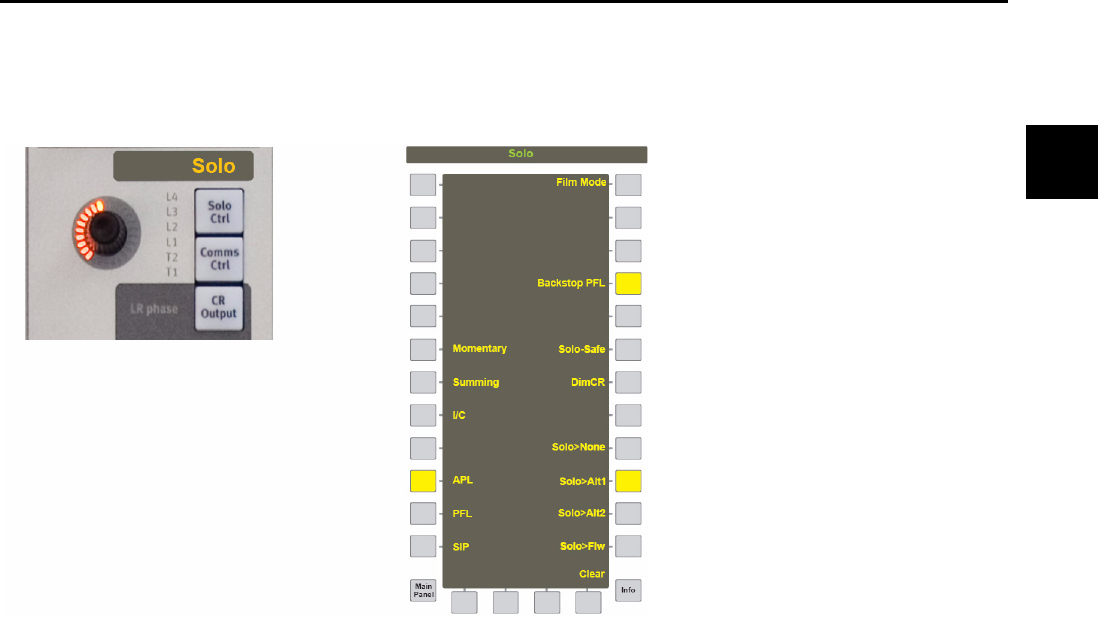User guide
Table Of Contents
- Contents
- Introduction to System 5
- Master Facilities and Channel Strip
- Control, Layouts and Snapshots, and Linking
- Chapter 8: Machine Control (S5P Only)
- Chapter 9: Control Groups and Multi Format Masters
- Chapter 10: Layouts and Snapshots
- Chapter 11: Linking (S5P Only)
- Chapter 12: Dynamic Automation (S5P Only)
- Chapter 13: GPI/O Event System
- Chapter 14: CM403 Film/Post Module (S5 Only)
- Chapter 15: Hybrid Pilot and System 5 Fusion Options
- Appendix A: Compliance Information

Chapter 4: CM401T Master Section 49
Solo
System 5 has an extensive solo control system that is accessed from the center section. Press the Master Solo section’s Solo Ctrl
switch to display the Solo Panel.
Solo Mode
Three Solo modes can be selected by pressing their respective switches in the Solo Panel. Selecting one mode automatically de-
selects the previous mode.
• APL (After-Pan Listen): Signal is post-fader and pan (stereo)
• PFL (Pre-Fader Listen): Signal is pre-fader in mono
• SIP (Solo-In-Place): This mode supports Solo channels through to the mix busses. All channels not soloed are muted but not chan-
nels designated Solo-Safe (page 50). This mode supports monitoring soloed channels with panning and effects if the effects re-
turns have been designated Solo-Safe. We do not recommend this destructive solo mode for live broadcast or for recording a
mix or dub.
• Film Mode: This mode switches any mix busses in playback to bus so an SIP solo can be heard.
Solo Level
The Solo knob controls the solo level (APL and PFL modes) sent to the speakers or the Solo Output in PatchNet. The level is in-
dicated on the LEDs surrounding the knob. The knob’s center LED flashes when a channel is soloed.
Solo Clear
All solo channels can be cleared using either of these methods:
•Press the Solo Knob Top switch.
– or –
•Press the Clear key on the bottom right of the Solo Panel.
Master solo controls (left) and Solo panel (right)










